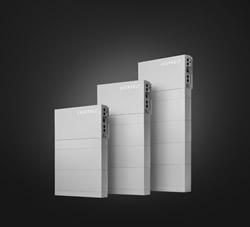The recent growth in installed capacity along with the expiration of service contracts and the changing characteristic of project owners is pushing the wind service market forward.
Increase In Installed Wind Capacity Places Spotlight On Wind Service Market
Gouri Nambudripad | Energy and Power Systems Group at Frost & Sullivan
| The recent growth in installed capacity along with the expiration of service contracts and the changing characteristic of project owners is pushing the wind service market forward. |
| Increase In Installed Wind Capacity Places Spotlight On Wind Service Market |
|
Gouri Nambudripad, Research Analyst, |
The wind energy sector is the most mature of all the renewable energy sources excluding hydropower. By the end of 2005, 40.5GW was installed in Europe, 69 per cent of the global capacity. By 2007, Frost & Sullivan estimates that Europe had installed 55GW of wind energy projects that represents 65 per cent of the global capacity.As the sector evolves by moving closer to grid parity, lots of emphasis is now being placed on activities such as servicing of the wind turbines. Operation and maintenance of wind projects that was ignored 4-5 years ago, is being looked at as more of an issue as the installed capacity increases and O&M costs remain high. Frost & Sullivan has now analysed this growing wind services market in a pioneering new study. Here are some of the key driving and restraining forces in this market.
Prevailing Trends
A major trend in the industry is that independent service providers are entering the wind service industry slowly posing a threat to the incumbent wind turbine manufacturers. As the O&M costs rise rapidly even utilities are thinking of opening in-house divisions for the same. The ISPs have challenges, making it more difficult for them to establish themselves and gain more ground in terms of market share. Access to expertise related to each of the wind turbines and access to spare parts are factors that are holding these types of players back. However, in time, it is expected that this will change. Wind turbine manufacturers, because of the excess work, are subcontracting some of the O&M activities to the ISPs. This will give them the experience of working on different turbines and leveraging that experience in the future. Also, as time goes by and if the ISPs want to stay in the game they will have to start nurturing relationships with the OEMs to develop and strengthen their spare parts supply. The recent growth in installed capacity along with the expiration of service contracts and the changing characteristic of project owners is pushing the wind service market forward. The sector also faces major challenges such as the escalation of O&M costs, characterized as being a sellers’ market and the shortage of skills. Forecasts Frost & Sullivan estimates a market size of €1.6 billion in 2007, nearly doubling by 2010 and reaching €4.6 billion in total revenues by 2014. This represents a CAGR of 16.3 per cent. The trend is for the growth rates to reduce as the rate at which new capacity is installed begins to slow down marginally. Also, the proportion of outsourced servicing revenues to the total potential servicing revenues for the European wind service market is expected to change over the next few years. Frost & Sullivan estimates that the cost of servicing currently ranges between €65-75 per MW per day or €25,000-29,000 per MW per year. Currently, Germany is the biggest market and will continue to hold that place until 2014 when the market size is estimated to stand at €1.2 billion. The markets that have been growing in the past few years and will continue to grow at big growth rates are Spain, UK, Italy and Portugal. Denmark, although the third largest country in terms of installed capacity and revenues in 2007, will fall during the forecast period because it has had very low growth rates from 2004-2007 and is expected to continue at those growth rates assuming only moderate take-up of repowering and the offshore wind markets. Portugal is expected to overtake Italy as the fourth biggest market in Europe in wind services by the end of 2014 owing to its growth rates. As per the research study, wind turbine manufacturers hold 70 per cent of the market of wind services, while independent service providers hold 25 per cent and in-house divisions hold 5 per cent. Details of the service offerings of the five major turbine manufacturers—Vestas, Gamesa, Enercon, GE Energy and Siemens—have been provided in the study Conclusion The prevailing trend presents opportunities to all three sections of the market. Wind turbine manufacturers need to up their game and look at providing a range of services at a desired quality. ISPs have the opportunity to fill the gap in the market as demand runs way ahead of supply. Wind farm operators need to think about whether it is worthwhile for them to open O&M divisions and try and reduce O&M costs. Requested information will be sent by email upon receipt of this information. |
|
The content & opinions in this article are the author’s and do not necessarily represent the views of AltEnergyMag
Comments (0)
This post does not have any comments. Be the first to leave a comment below.
Featured Product


